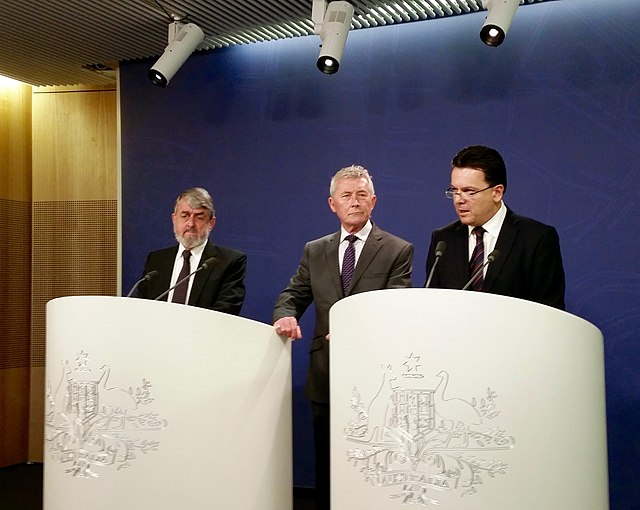Australia–East Timor spying scandal
The Australia–East Timor spying scandal began in 2004 when the Australian Secret Intelligence Service (ASIS) clandestinely planted covert listening devices in a room adjacent to the East Timor (Timor-Leste) Prime Minister's Office at Dili, to obtain information in order to ensure Australia held the upper hand in negotiations with East Timor over the rich oil and gas fields in the Timor Gap. Even though the East Timor government was unaware of the espionage operation undertaken by Australia, negotiations were hostile. The first Prime Minister of East Timor, Mari Alkatiri, bluntly accused the Howard government of plundering the oil and gas in the Timor Sea, stating:"Timor-Leste loses $1 million a day due to Australia's unlawful exploitation of resources in the disputed area. Timor-Leste cannot be deprived of its rights or territory because of a crime."

Senator Nick Xenophon (right) with Bernard Collaery (centre) and his lawyer Nicholas Cowdery QC (left) calling for a royal commission into the bugging scandal in November 2015.
Protesters in Brisbane protesting Australia's claim on East Timorese oil, May 2017
The Timor Sea is a relatively shallow sea in the Indian Ocean bounded to the north by the island of Timor with Timor-Leste to the north, Indonesia to the northwest, Arafura Sea to the east, and to the south by Australia. The Sunda Trench marks the deepest point of the Timor Sea with a depth of more than 3300 metres, separating the continents of Oceania in the southeast and Asia to the northwest and north. The Timor sea is prone to earthquakes and tsunamis north of the Sunda Trench, due to its location on the Ring of Fire as well as volcanic activity and can experience major cyclones, due to the proximity from the Equator.
The Timor Sea at Vessoru, East Timor
Timor Sea and neighbouring seas
Tropical cyclone Floyd over the Timor Sea, 2006
August 2005 NASA satellite photograph of the Rowley Shoals






